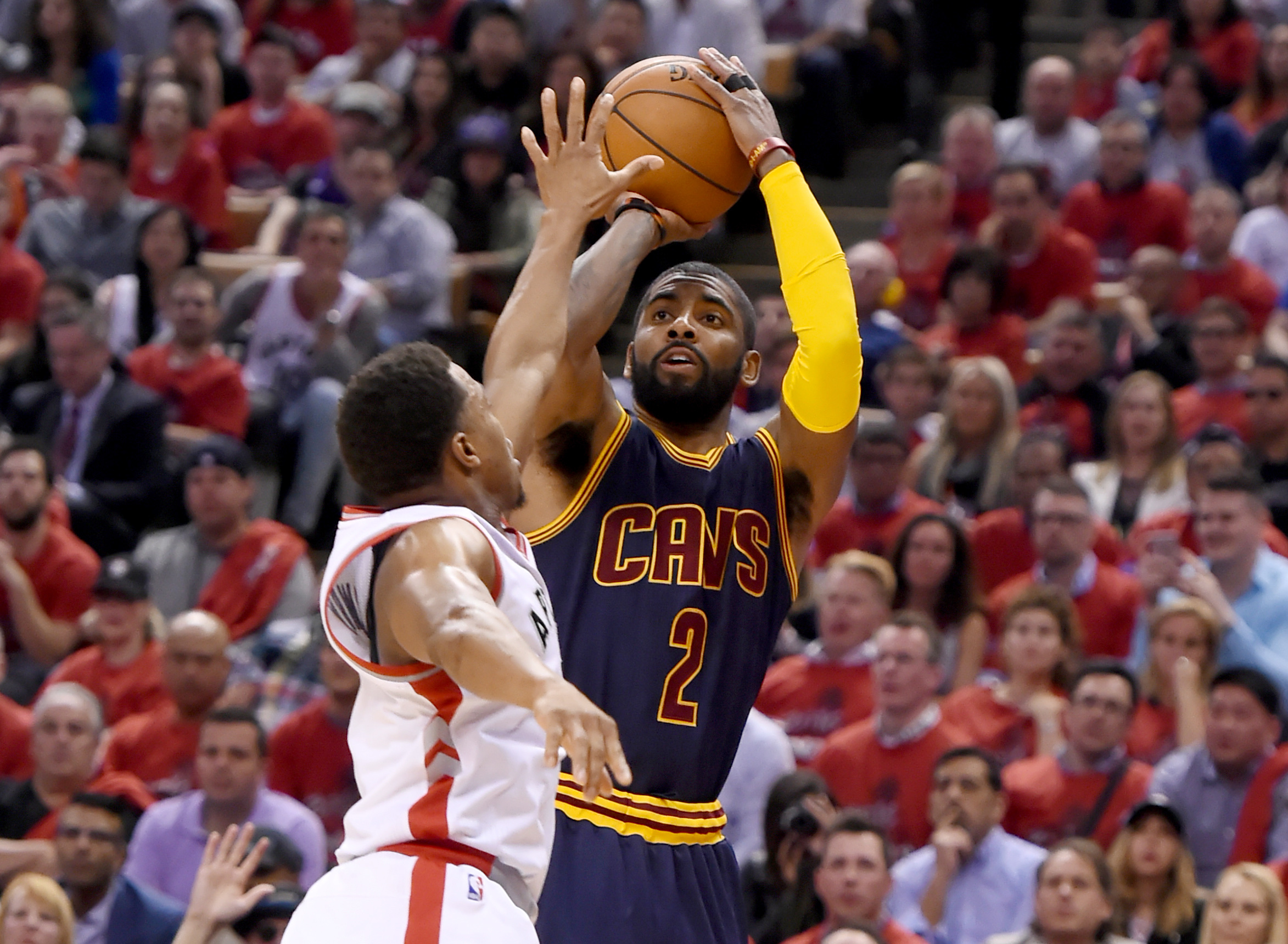![NBA: Playoffs-Cleveland Cavaliers at Toronto Raptors [image : 85216534]](http://www.gannett-cdn.com/media/2016/05/31/USATODAY/USATODAY/636003211988115831-USATSI-9304153.jpg)
![Who's better: LeBron, Kyrie or Steph, Klay? [video : 85253302]](http://videos.usatoday.net/Brightcove2/29906170001/2016/06/29906170001_4923220251001_video-still-for-video-4923206652001.jpg?pubId=29906170001)
SAN FRANCISCO – Kyrie Irving fractured his kneecap in Game 1 of last season’s NBA Finals, had surgery two days later and played for the first time in the 2015-16 season on Dec. 20.
Those are the known facts. What wasn't known is what Irving, the Cleveland Cavaliers’ fifth-year point guard, went through between surgery and that first game – the grueling physical rehab and mental strength required to get back. And not only get back to where he was but be better.
“I wasn’t going to settle for just being OK and not being everything I thought I could be,” Irving told USA TODAY Sports.
It wasn’t easy or fast.
“It sucks because you have to re-teach yourself to do a lot of the things that you were already good at,” Irving said. “I had to learn how to walk again. I had to teach myself how to walk without a limp and without favoring my leg. I had to re-teach myself how to finish around the basket, how to shoot a mid-range pull-up, how to stop on a dime. It’s all confidence. It’s all mental, and it takes a lot of time.”
Look at Irving now. Through 14 playoff games, he is averaging 24.3 points, 5.1 assists and 1.5 steals and shooting 48% from the field and 45.6% on three-pointers.
![Armour: It's never sunny in Cleveland sports [oembed : 85215974] [oembed : 85215974] [oembed : 85215974] [oembed : 85215974] [oembed : 85215974] [oembed : 85215974] [oembed : 85215974] [oembed : 85215974] [oembed : 85215974] [oembed : 85215974]](/Portals/_default/Skins/PrestoLegacy/CommonCss/images/smartembed.png)
“The last three weeks of the (regular) season, that's when Kyrie really started to come around," Cavs coach Tyronn Lue said. "(He) trusted his knee. Having the trust to do certain things. Make a crossover move or getting to the basket moving off of that leg, and also just getting the leg underneath him for a shot.
"Once we started the playoffs, he had all the confidence in the world in his leg."
The difference is obvious. During the regular season, Irving struggled with his three-point shooting and his shot-making at the rim. One trainer told Irving it would be about a year before he was back and explained how he would know.
“He told me the day I wake up and don't worry about stepping down from my bed with two feet is the day I’m back,” Irving said. “I’m getting out of bed pretty OK now. You’re not worrying about whether your knee is going to hurt, whether it’s going to be swollen. I dealt with that for eight months. It was a process.”
Now, Irving’s game – offensively and defensively – is central to Cleveland’s success against the Golden State Warriors in the NBA Finals. He has a challenge, too, with NBA MVP Steph Curry on the other side.
Irving has been fantastic in the postseason. He led Cleveland in scoring in the first round against Detroit – the first time LeBron James hasn’t led his team in scoring in a playoff series since the 2011 Finals – has averaged more than 20 points in each series and has scored 30-plus points three times, including 30 in Game 6 against Toronto.
![Kyrie Irving Playoff Game Stats in 2015-16 [oembed : 85214116] [oembed : 85214116] [oembed : 85214116] [oembed : 85214116] [oembed : 85214116] [oembed : 85214116] [oembed : 85214116] [oembed : 85214116] [oembed : 85214116] [oembed : 85214116] [oembed : 85214116] [oembed : 85214116] [oembed : 85214116] [oembed : 85214116]](/Portals/_default/Skins/PrestoLegacy/CommonCss/images/smartembed.png)
When Irving is on the court during the playoffs, the Cavaliers score 118.3 points per 100 possessions, and when Irving, James and Kevin Love are on the court this postseason, the Cavs score 122 points per 100 possessions.
““Those three have been playing great together,” Lue said.
That leads to a topic Irving wanted to address: the idea that he couldn’t thrive in a setting with two other stars.
"Sometimes, my personality got construed in terms of what I wanted in a team environment and what I could be around other great players,” Irving said. "It was the first thing people said when everyone came here. How is Kyrie going to fit in? I have no problem fitting in with other great players.
“As long as we’re winning and we’re holding each other accountable, then I’m fine with that. Everything else will take care of itself.”
![2016 NBA Finals preview: Warriors vs. Cavaliers [oembed : 85215988] [oembed : 85215988] [oembed : 85215988] [oembed : 85215988] [oembed : 85215988] [oembed : 85215988] [oembed : 85215988] [oembed : 85215988] [oembed : 85215988] [oembed : 85215988]](/Portals/_default/Skins/PrestoLegacy/CommonCss/images/smartembed.png)
Making it work with Irving, Love and James hasn’t always been smooth for the Cavaliers, but Lue and the players found a way to make it work.
Earlier in the season, James gave an impassioned defense of Irving’s game and suggested that Irving is capable of being more than an All-Star. James seemed to say Irving can be an MVP candidate. He continued to praise Irving during the playoffs.
“The Kyrie that I see on a daily basis when you guys are not around is the Kyrie that I envisioned,” James said. “He's grown every single day, every single week, month, and over the course of these last two years or year-plus, becoming a leader and becoming a staple of our team.
“We all knew how talented the kid was and how talented he is still today, but his growth and what he demands out of all of us as the point guard (and) as one of the leaders of the team, that's the best part about it.”
Follow Jeff Zillgitt on Twitter @JeffZillgitt
![sports-itunes-nba [embed : 71636928]](/Portals/_default/Skins/PrestoLegacy/CommonCss/images/embed.jpg)
![Cavaliers get rematch with Warriors in NBA Finals [oembed : 85269296] [oembed : 85269296] [oembed : 85269296] [oembed : 85269296]](/Portals/_default/Skins/PrestoLegacy/CommonCss/images/smartembed.png)


